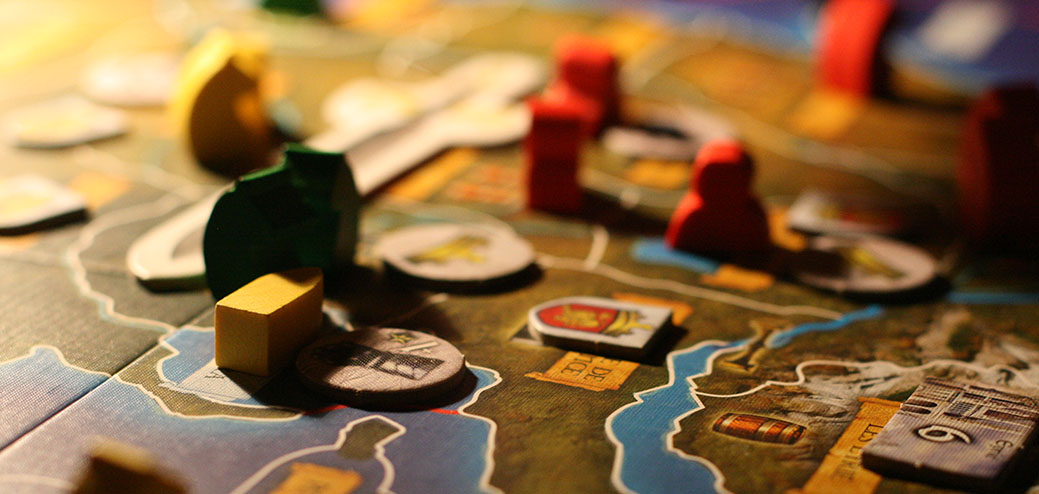
Ten years ago indie game developer and author Sande Chen studied the state of the games for impact movement in the book she co-authored called “Serious Games: Games That Educate, Train and Inform.” We’ve asked her to revisit that work to see what has or has not changed in the field of learning games.
Introduction: Going Analog
Several respondents to the Educational Game Developers survey were not video game developers, but rather analog game developers. Analog games cover the spectrum of board and card games, tabletop role-playing games (RPGs), and live-action role-playing games (LARPs).
Players of digital games, with the exception of party games like Rock Band, rarely play together and side-by-side whereas players of analog games expect a more slower-paced and chatty group experience. Considering verbal and non-verbal cues as well as the immediacy of social peers sitting right next to each other, Joshua Archer, director of Iocari Games, feels that there is a visceral difference between playing an analog game versus playing a digital game.
I think there’s a level of communication that we have not been able to codify and that doesn’t come through in a video game.
— Joshua Archer, Iocari Games
Even before the advent of computer games, teachers used games in the classroom and with much success. Clark Abt, in his 1969 book, Serious Games, described how the 1960’s Avalon Hill WWI game, Grand Strategy, motivated students to research WWI on their own in order to improve a second playing. The afternoon game, unlike the morning game that had resulted in global war, ended in peaceful compromise.
This self-directed drive to learn, or intrinsic motivation, is what teachers would like to cultivate in students. Informal settings can help with that, through a change of scenery or the excitement of a field trip. Kids are more open to try different things when at a club or after-school program. There isn’t a feeling of coercion. They can key in to gamer communities, explore their passions, and end up learning beyond what’s required in school curriculum. In other words, they discover meta-gaming. Theorists suggest that the meta-game may be the zone where learning actually occurs.
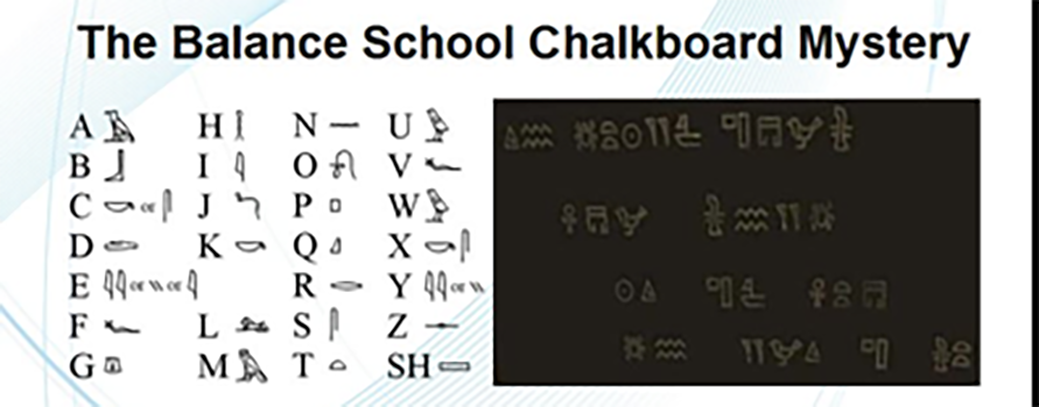
We found that instructors are spending as much time having students reflect on the material as they are having them play the game.
— Conall Ryan, CEO of Muzzy Lane Software
In the Meta-Game
Even before an episode of HBO’s hit show “Game of Thrones” starts rolling its closing credits, there’s already been a flurry of activity on fansite forums and social media. Speculation runs wild on the fate of the remaining characters. While casual fans may wait for the water cooler conversation, online journalists are hard at work preparing commentaries that analyze the latest plot points.
Similarly, as was mentioned in the previous article, “Facing Edutainment’s Dark Legacy,” devoted fans of popular games generate excitement except that in addition to speculation on future content, there is also a deep analysis of how the game works, what is the optimal way to play, plus videos, maps, mods, tables, Wikis, data, spreadsheets, stories, artwork, and costumes.
According to Henry Jenkins, Provost Professor of Communication, Journalism, Cinematic Arts and Education at USC, all these active discussions and social interactions between players outside the game, referred to as meta-gaming, promote critical thinking and learning. If learning could be centered in the meta-game universe, then the game world could remain a place of play and experimentation. After all, students are already stressed enough without thinking that they might be evaluated on their progress in a game. If this is the case, then all those on-board assessment tools may be a misguided approach.
For Scot Osterweil, creative director of the MIT Education Arcade, it’s the difference between a spelling bee and Scrabble.
Spelling bees are high-pressure events where assessment is given immediately without a discussion of how to arrive at the answer whereas in a game of Scrabble, a child looks at the letters, tries out different letter combinations, and may launch into a discussion as to whether or not the proposed word is legit. It’s a low-risk environment in which the child is encouraged to have fun trying out different spellings.
In fact, teachers typically do have class discussions about the game while not playing the game. They want students to reflect on what happened in the game. Reflection may take various forms. Examples include a summary recap, an essay, or a more in-depth discussion of the actions chosen by students in the game. Where did things go right or wrong? How did the game’s content make an impact? Reflection is a time for synthesis.
“We found that instructors are spending as much time having students reflect on the material as they are having them play the game,” says Conall Ryan, CEO of Muzzy Lane Software. “Increasingly, instructors are looking at reflection as part of the gameplay.” This is why Muzzy Lane Software includes tools to review past actions in its simulations.
Still, meta-gaming is more than just reflection or class discussions. It’s about learners engaging actively and participating with others in a shared love of the game. There’s a whole community and social aspect, which plays out through text chat, voice chat, forum posts, memes, videos, livestreaming, social media etc.
Educational LARP designer Aaron Vanek has seen the excited reactions from students who have spent the entire school day pretending to be characters in a game. A semester-long research study based on his work at a middle school confirmed that overall, participation in educational LARPs, or edu-larps, increases a student’s intrinsic motivation, enjoyment of school topics such as science, and perceived competence. Most studies on edu-larps have focused on their potential for intrinsic motivation due to their engaging, participatory nature, a contrast to the passivity expected in more traditional learning methods.
Anecdotally, he has seen that intrinsic motivation at work, spurring students to learn more about their characters without prompting or homework. A 6th grader role-playing a priest in the Mesopotamia edu-larp came back the second day armed with reasons why priests should get paid more. Since the student was successful in convincing the teachers, who played the judges of ancient Babylon, priests got more income in that session. One benefit of analog games is that changes to the game can be done almost instantaneously.
From Archer’s observations of edu-larps he has run, students end up engaging each other. Once they see their friends adopting personas and speaking in character, they are compelled to do so as well. That shared story can run in many directions based on player actions.
Archer, whose company uses both edu-larps and table-top RPGs in formal and informal education, says, “RPGs can promote the acquisition of knowledge so that you can be a better player. If you are playing a medieval European fantasy type game, you might want to look into armor and weapons. If it were a more ancient culture, you might look into mythologies. If you’re working in science fiction, then you’re definitely invested in learning about science.”
Other edu-larp studies have concluded that the games can help develop soft skills such as teamwork and leadership. The students’ active participation in the edu-larp increases their confidence, which in turn increases the students’ feelings of agency and empowerment. In addition, students gain empathy for people in vastly different situations than their own.
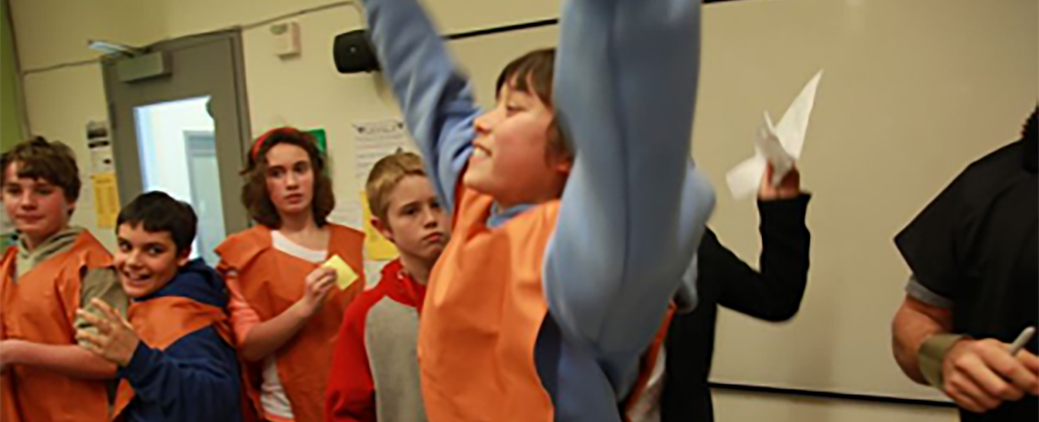
Larping It Up
Any adult who has been through a mock interview can tell you about the benefits of role-play and simulation. Universities have been using role-play and simulators for years in the fields of healthcare, business, science, and social policy. Former teacher Peter Shea, now director of Professional Development at Middlesex Community College in Massachusetts, recalls one incident in which a student doctor was weeping after she had killed off her virtual patient.
Adults, in general, understand the value of role-play for professional development, but may not see how the imaginative play of LARPs helps education. Call it a historical re-enactment and it sounds educational, but that wouldn’t fully describe larping since players affect the story of the game. They are not just hearing about or re-enacting a story, but are a part of the story.
Like improvisational theatre combined with the game mechanics of tabletop RPGs, LARPs have systems for character progression through the narrated story. In Archer’s edu-larp on the Industrial Revolution, there are experience points (XP) given for various activities and yet, winning may not be about gaining the most XP. Winning might be in co-authoring an extremely satisfying story regardless of whether or not the player’s character dies or amasses the most wealth in the game.
Archer’s company, Iocari Games, recently branched into developing curriculum-compatible edu-larps for schools in addition to its after-school programs and summer camps. The after-school program relies heavily on tabletop RPGs with familiar gaming systems like Dungeons & Dragons but with original content. The summer camp combines engineering, physical activity, tabletop RPGs, and larping by allowing the kids to play out their created characters. For example, in one summer session, he did a Star Wars themed week where the kids got to manufacture foam light sabers using parts from Home Depot.
Archer anticipates the need for professional development and maybe a digital/analog solution. Teachers would use the digital portion for analytics and to track student progress. All his edu-larps comply with Common Core standards and he understands the need to mesh with curriculum. In some cases, the subject matter, particularly math and science, may lend itself easily to both edu-larping and more traditional learning methods. For example, a chemistry-oriented edu-larp could naturally flow into lab sessions. He can envision situations whereby a school would want Iocari Games to come in and run the edu-larps or alternatively, the school might want to train teachers to run the games themselves. The development costs for this digital/analog hybrid might end up similar to the ones for digital games in “The Real State of Learning Game Funding.” [LINK to Article 2] but in general, development costs for edu-larps tend to be lower.
Vanek says one obstacle in pitching to schools is that school administrators may have no idea what an edu-larp is. Even among gamers, larpers are a minority. While there are American summer camps promoting edu-larping like Renaissance Adventures and Iocari Games’ Adventure Gaming Camps, edu-larping isn’t as widely known as it is in Scandinavian countries. There’s even a style of design called Nordic-style larp or Nordic larp that emphasizes character growth, collaboration, immersion, and emotionally intense scenarios. Notably, Danish boarding school Østerskov Efterskole uses edu-larps as its main pedagogical tool.
VIDEO: An Østerskov Efterskole project
After observing meta-gaming and its potential for education, Mads Lunau and Malik Hyltoft, veterans of the Danish role-playing scene, founded Østerskov Efterskole in 2006. Every class and subject uses edu-larps. Students could be dressed up for historical battles, futuristic space travel, or even in suits to conduct business deals or negotiate national policy. A year-long research study at Østerskov Efterskole reported that students scored just as well on standardized tests as the national average, if not above average in some areas. In particular, edu-larp curriculum seems to benefit children with disabilities, even autism and major ADHD.
Both Archer and Vanek acknowledge the difficulties of assessment in edu-larps. Besides tests and reflection exercises, an educator may have to resort to pre-tests and debriefings after the edu-larp to gauge knowledge learned. Well-designed edu-larps empower and give agency to students, encouraging them to use creative expression to continue the game. The students may even engage in meta-gaming. All of these are benefits that can’t be easily measured through testing.
Clearly, digital games have the advantage over analog games in the area of assessment. Digital games can also offer experiences that would be hard to mimic in real life, such as zero gravity, or may be too costly to rehearse over and over in drills or other mock situations. Furthermore, the fan communities for video games are larger and therefore, there are more opportunities for meta-gaming and more support in general.
However, the freeform activity of edu-larps allows students to be divergent and come up with unexpected solutions. Despite interactivity, digital games are still limited by programming and no sandbox game is so open as to include everything. With edu-larps and tabletop RPGs, new material can be added or adjusted on the fly. The game masters can adapt to any situation.
In that way, an edu-larp can be personalized to an individual classroom. Vanek doesn’t presume to know the class as well as the teacher. He says, “I want to give more power and more authority and empowerment for teachers to adjust their game based on their classroom.” If there’s a potential triggering scene, then by all means, teachers as GMs have the power to make changes to the game.
Moreover, in edu-larps, there aren’t reset buttons. Kids learn to deal with consequences of bad actions.
“There’s a narrative structure and if your character takes a turn, this way or that, your actions have consequences,” says Archer. Sometimes, those consequences lead to good story results. Other times, kids learn that it’s OK to make mistakes even if those mistakes can’t be erased.
As with tabletop gaming, edu-larps offer social emotional learning, the quality of which can’t be matched by staring at a screen. Most importantly, edu-larps give students permission to use their own imaginations. For this reason, Archer says there isn’t much difference between edu-larping in formal and informal settings.
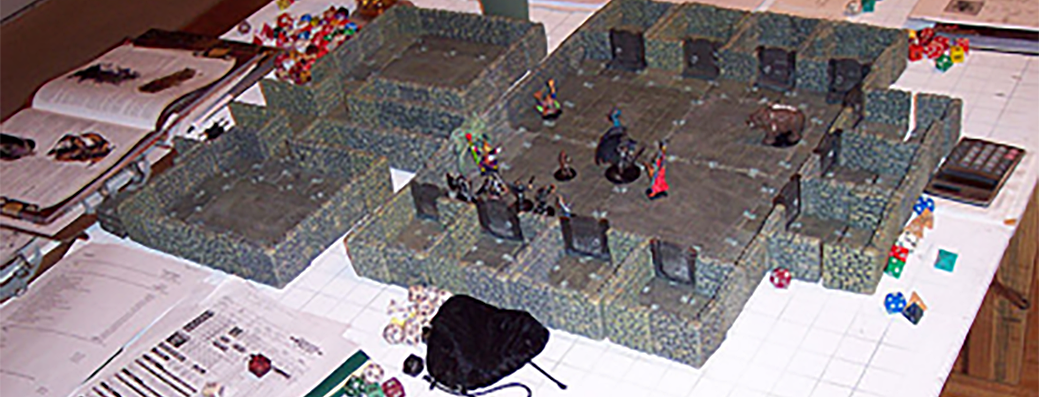
Table-top Business
As with edu-larps, tabletop games can be a useful tool for struggling students. Speaking at the 2015 Different Games Conference, Rocio Rayo of Colmena Design reported that “students are overwhelmingly more engaged, even students that don’t necessarily self-identify as gamers” when playing one of their math games. She finds that if students do stick it out with the class, they end up with a changed attitude about math. Before, they may have had self-doubts, but by the time the final exam comes around, they sincerely believe that they can pass remedial math.
Taking inspiration from the trading card games that students were already playing, like Yu-Go-Oh!, Pokemon, and Magic: the Gathering, Colmena Design made card games, dice games, and board games for remedial science and math in collaboration with professors from Hostos Community College. Several of the games are available for purchase on The Game Crafter‘s online shop. The Game Crafter, a web-to-print game publisher, is where indie developers can self-publish analog games.
The more traditional route would be to go to one of the board game conventions and pitch to board game publishers. Unfortunately, board game publishers generally feel that there is no market for educational games except for flash cards, which really aren’t games. Plus, board game publishers aren’t going to distribute to schools. For that, an analog game developer would have to go through the same arduous process that digital game developers go through to sell to schools.
In addition, there are nuances to this business. For example, unlike in video games, shelf space is still very important and it’s difficult to sell a tabletop game to consumers without shelf space. If the game is expensive, then the box needs to be bigger to occupy more shelf space. The box size is an indicator of value. This is true even of card games, which could fit in a smaller box.
“Even if it’s a box of air, people will pay for the box,” says designer Sebastian Sohn.
Teacher Will Penner, who created the math game Mathopoly, found that going to teacher conventions helped him the most. He sells anywhere from 500 to 5000 games per year through word of mouth. He gathers about 20-60 teachers or principals to come play his game. Once that happens, he says, the game basically sells itself.
Teachers are often more receptive to board games because it’s a whole lot simpler to put a board game on a table than to set up computers or get tablet carts. He has an online store and has gotten the game on store shelves, but feels that the best way to sell the game is for him to demo it to teachers.
Penner stresses that even with an analog game, professional development is essential. It’s not enough to buy the game, stick it on a shelf somewhere, and expect that students will play it. Teachers would have to guide the students step by step and also, adapt the game to their own purposes. After all, only the teacher is aware of which children are struggling and with which math concepts.
Outside of schools, there are after-school and summer programs that use tabletop games to help with various subjects. In this business model, the games themselves are not sold, but instead the programs market the experience of playing. Becky Thomas, whom Archer calls his mentor, has been operating the Roleplay Workshop for over 25 years. A credentialed teacher, she created her own role-playing system Abantey to help students with math, science, and problem-solving skills. Like digital game developers, she initially did find resistance to the use of games in education and solved that by referring to the game as interactive storytelling.
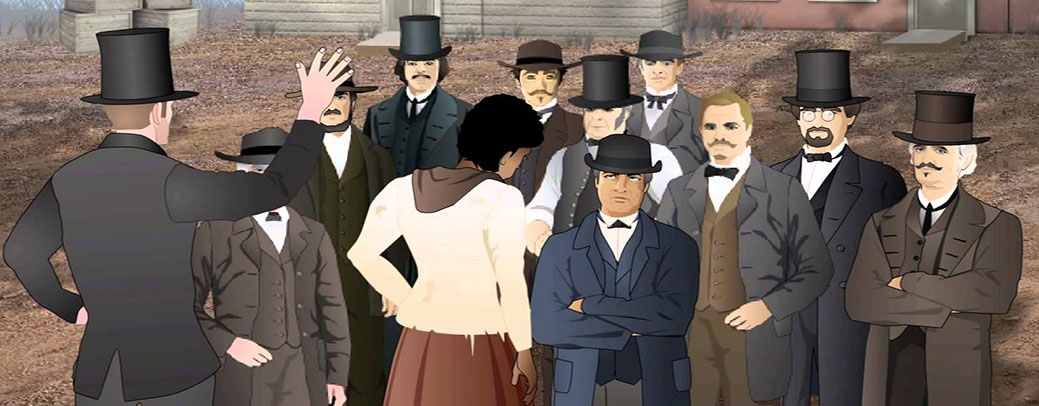
Museums do not move quickly. Libraries are the same. These are not start-up, go-go-go kind of organizations.
— Kellian Adams, Green Door Labs
Keeping It Informal
The structure of formal education hasn’t changed much to accommodate active learning or learning at one’s own pace, but informal education, any schooling outside of schools, can provide those opportunities.
In informal education, there’s more time to go through a game or to play at a leisurely pace. Plus, it tends to be more social. Taken out of the school settings, kids can act very differently in the same game. After examining the real-time data of choices made in the Mission US: Flight to Freedom, developer David Langendoen was surprised to discover that while at school, very few students, acting as the slave, Lucy, chose to make that trek to freedom. Away from school, the students didn’t feel that need for obedience and tried all sorts of choices.
Unlike some European countries, there is very little informal education funded by the government in the U.S. In Norway, for example, the local government pays for centers outside of schools to provide young people with remedial help. In the U.S., after-school enrichment programs, which may be part of child care, is funded by parents, private funding, grants, and foundations. Youth programs, led by adult leaders who are not necessarily teachers, usually cater to interests in arts, sports, or media.
Of the survey respondents, 58% said their games were used in after-school programs, followed by 37% in museums and 32% in summer camps. 21% stated libraries and the write-in category included events and special needs therapy. Events could mean private parties, tutoring, or special occasions. The games could be funded by grants or work-for-hire or it could simply be developers running their own after-school programs and summer camps, as previously noted.
VIDEO: Tate Worlds
Museums, while still considered informal, are more formal than at-home learning. Museum games typically target young people and in some cases, students are encouraged to create games based on the museum’s galleries. Museum games may be part of the exhibition itself or they can originate from the education department or outreach. For example, the Tate Gallery released a series of Minecraft maps based on artwork called Tate Worlds: Art Reimagined for Minecraft with the intent of reaching kids where they play.
Developing for Museums
Developing for museums is exactly like developing for schools, except that in many aspects, it is even more challenging. It’s very hard to sustain a business solely focused on museum games. The budgets are smaller and there are the long waits, whether for grant funding or board approval. The wait can be as long as 2 years. It’s not so much that the people commissioning the game need convincing, but rather the higher-ups who decide the budgets.
“Museums do not move quickly. Libraries are the same. These are not start-up, go-go-go kind of organizations” says Kellian Adams, founder of Green Door Labs. “As they like to say, ‘We’re in the forever business.’ They’re in the business of preserving the good and bad for posterity, so they’re not in any hurry.”
As with schools, budgets differ from bucket to bucket. If the game, interactive, or gamified experience is part of the exhibition, then budgets can range from $15,000 to $50,000 on projects lasting 6 months to a year. This may include customizing hardware, programming, and design. For the education department, however, typical budgets are less than $5000. These games are primarily intended for classrooms of children on field trips. For these small games, museums may rely on pre-existing mobile game platforms like Green Door Labs’ Edventure Builder that can be used to easily create games. Typical games include scavenger hunts or interactive mysteries. Some programs focus on game creation. In fact, Adams has led game-building camps for kids at museums using the Edventure Builder. Museums may also use games to highlight special events, such as launch parties.
VIDEO: Edventure Builder Trailer
Available technology differs even more greatly among museums than with schools. Some museums can pass out tablets to student visitors while others are in remote locations without connectivity. In those cases, developers may have to go analog, or find a way to create a digital/analog hybrid solution. The technical requirements may differ greatly from project to project. Since different skills may be needed, most developers use freelancers on a per-project basis.
Given the constraints and coupled with the uncertainty of steady work, developing for museums is not something all developers can pull off. However, interviewees say that working in an actual physical space and seeing children interact with those spaces is quite fulfilling. Even though the game may be digital and on a tablet, there may be analog considerations, the checklists and worksheets that supplement a game.
Museums can be fun places and definitely, museums are seeking ways to engage kids. There have even been edu-larps conducted at museums. Their unique positioning as a place a knowledge, but not a school, and a tourist attraction means that museums can merge that divide between entertainment and education. Furthermore, they are locations that are perfect for opt-in learning and learning at one’s pace. Hopefully, there will come a day when every museum installation has a game component.
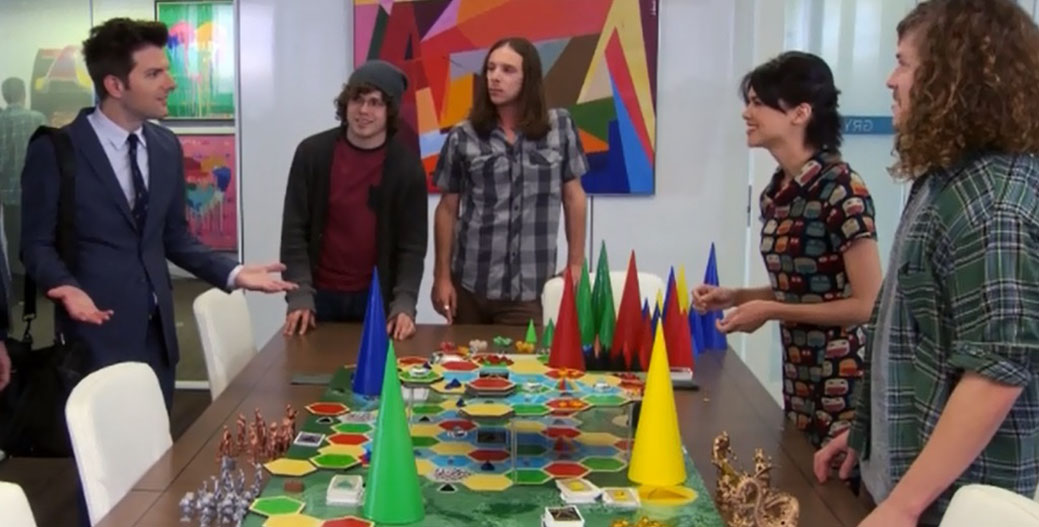
Conclusion
There is a whole world of learning outside of school, from meta-gaming to museums, after-school programs, and summer camps. It’s here where there’s time to explore and follow passions, wherever they might lead. Edu-larping, role-playing games, and other tabletop games are all longer-form games that require an investment of time. However, the benefits are immeasurable, since these games instill confidence and self-esteem in their players, improve social skills through teamwork, and reconnect with childhood play. In particular, analog games appear to be especially effective in helping struggling learners or those with disabilities. Schools with technological challenges may want to consider an analog game alternative.
 Sande Chen is the co-author of Serious Games: Games That Educate, Train, and Inform. As a serious games consultant, she helps companies harness the power of video games for non-entertainment purposes. Her career as a writer, producer, and game designer has spanned over 10 years in the game industry. Her game credits include 1999 Independent Games Festival winner Terminus, MMO Hall of Fame inductee Wizard101, and the 2007 PC RPG of the Year, The Witcher, for which she was nominated for a Writers Guild of America Award in Videogame Writing. She has spoken at conferences around the globe, including the Game Developers Conference, Game Education Summit, SXSW Interactive, Serious Play Conference, and the Serious Games Summit D.C. She writes about serious games, game design, and other topics on her blog, Game Design Aspect of the Month and can be found on Twitter @sandechen.
Sande Chen is the co-author of Serious Games: Games That Educate, Train, and Inform. As a serious games consultant, she helps companies harness the power of video games for non-entertainment purposes. Her career as a writer, producer, and game designer has spanned over 10 years in the game industry. Her game credits include 1999 Independent Games Festival winner Terminus, MMO Hall of Fame inductee Wizard101, and the 2007 PC RPG of the Year, The Witcher, for which she was nominated for a Writers Guild of America Award in Videogame Writing. She has spoken at conferences around the globe, including the Game Developers Conference, Game Education Summit, SXSW Interactive, Serious Play Conference, and the Serious Games Summit D.C. She writes about serious games, game design, and other topics on her blog, Game Design Aspect of the Month and can be found on Twitter @sandechen.
